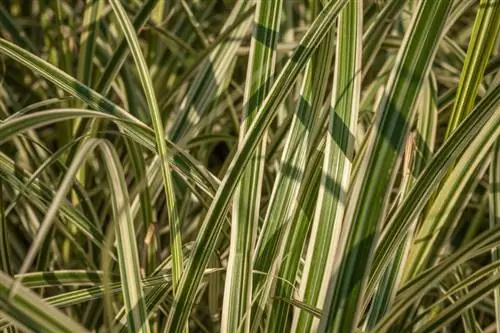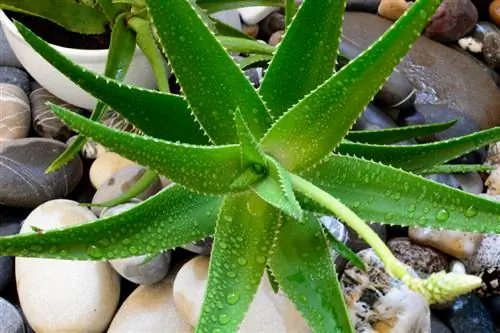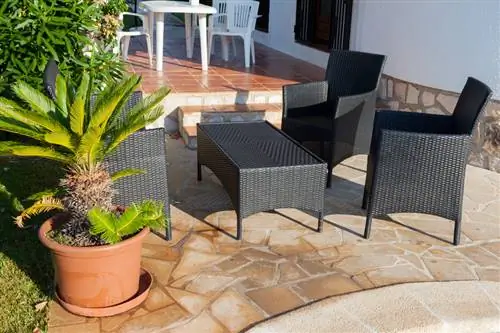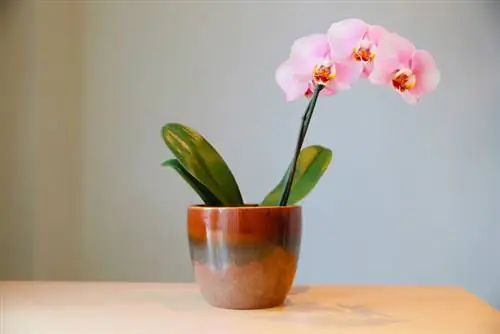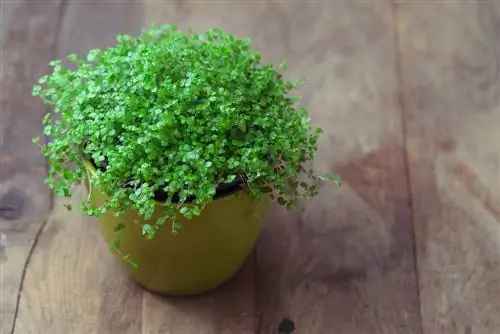- Author admin [email protected].
- Public 2023-12-16 16:46.
- Last modified 2025-01-23 11:20.
Whether freshly bought or planted a long time ago - the Japanese sedge can quickly become a problem. If you forget to care for it, you will have difficulty ignoring the signs of time on this plant. But what care does this type of sedge need?
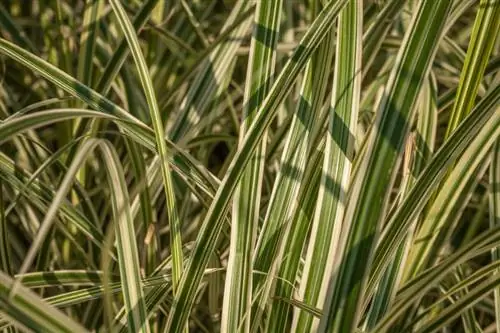
How do I properly care for my Japanese sedge?
Japanese sedge care includes sparing fertilization, regular watering, optional pruning and winter hardiness measures. Use half-dose fertilizer twice a year, water to keep the soil evenly moist and protect the plant in temperatures below -10°C.
Is compost sufficient for fertilization?
The Japanese sedge is easy to please when it comes to fertilizing. Their nutrient requirements are low. Whether compost, horn meal, stable manure, liquid fertilizer or manure - it can make friends with almost any proven fertilizer. For Japanese sedges in pots, you should use liquid fertilizer (€8.00 on Amazon) or stick fertilizer.
Two fertilizer applications per year are enough. These should take place between April and September. Apply the fertilizer in half doses. Do not fertilize once you have repotted the Japanese sedge. Another note when planting outdoors: add compost to the soil when planting.
How often should you water the Japanese sedge?
The Japanese sedge does not tolerate waterlogging or drought. In contrast to most other sedges, it is extremely sensitive to dry soil. The soil should be kept evenly moist. Then the Japanese sedge grows fastest and best.
It is important to ensure sufficient water supply, especially after planting and in the summer months. Even in winter, the substrate should not dry out, but should be moderately moist. The Japanese sedge is evergreen and evaporates a lot of moisture even in winter.
Does this ornamental grass need shaping and pruning?
When winter has passed, the Japanese sedge can be cut. Basically, this cut is not a must. But if the plant has become out of shape or has become too large, it is worth cutting back to just above the ground.
- cut down to 5 to 6 cm above the ground
- Use secateurs, hedge trimmers or knives
- Clean cutting tool before cutting
- Wear protective gloves
Can the plant stay outside without protection in winter?
The Japanese sedge is hardy in pots down to -10 °C. Outdoors it can tolerate temperatures down to -15 °C. It is better to protect it in rough locations. This can be done, for example, in the form of a blanket of leaves and brushwood.
Tip
Definitely avoid over-fertilizing the Japanese sedge! Otherwise, their growth will be unnecessarily accelerated and they will become more susceptible to pests and diseases.

